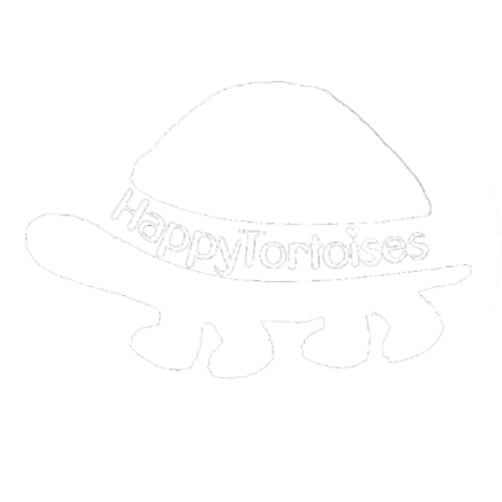Mediterranean Spur Thighed (or “Greek”) Tortoise Care Sheet
Temperature
Day 24 - 28 º C
Basking area 30 -32º C
Night 22º C (essential temperatures never dip below 20º C).
NB: the above temperature ranges are recommended for hatchlings and juveniles in indoor enclosures. Older Greek tortoises can be housed outside during early spring to early autumn (*see hibernation section)
Substrate and humidity
50:50 organic/unfertilised top soil and play-pit sand, (soil depth: approx. height of the shell, e.g 1-2” deep for hatchlings and juveniles, >4” deep for adults).
Lightly mist substrate daily to prevent it becoming dusty, help with humidity and thermoregulation. Change substrate every 4-6 weeks
Recommend having a hide/half log with damp sphagnum moss inside to create a humid hide area
Food
100% of diet to be made up of tortoise-safe weeds/flowers (free from chemicals/weed killer etc) e.g.:
weeds: dandelion, plantain, hawksbeard, mallow, sowthistle
flowers: pansy, campanula, forget-me-knot, african violet, hibiscus
salad mixes (when weeds unavailable in frosty spells): Lambs leaf, Florette crispy salad mix (green or pink label).(see ‘useful websites’ section for more info on what is safe to feed)
Food supplements
1⁄4 teaspoon of limestone/calcium supplement on food every other day (e.g. Mon/Wed/Fri) 1⁄4 teaspoon of Nutrobal on food alternate days to limestone/calcium (e.g. Tue/Thu/Sat) Leave one day free (e.g. Sun)
Leave Cuttlefish (whole) in the enclosure for tortoise to nibble on for extra calcium
Water
Provide fresh water daily (in a shallow water dish that they can easily step in/out of)
Bathing
Frequency:
0-1 year: Every other day for 10 minutes; 1-2 years: twice per week for 20 minutes; 2+ years: once a week for 30 minutes;
Shallow bath (1⁄4 height of tortoise) in lukewarm water (30-32°C). Ideally in the morning, before food.
Basking and UVB
UVB is vital for the health of your tortoise
Use a combined UVA + UVB bulb for the basking area (or separate UVB tube and separate basking
bulb)
Turn on basking bulb for 12 hours per day (summer); 8 hours per day (winter*).
Make sure the tortoise is unable to touch the bulb to prevent burning/overheating (bulb should be
approx 30cm away from top of the shell, depending on manufacturer’s instructions).
Replace bulbs every 6-12 months as UVB degrades and no longer beneficial to your tortoise
Weighing
Weigh weekly before their bath and keep a record of the weight. Weight should gradually increase each week (e.g. 1-2g every TWO weeks, for 0-2 years).
Disinfectant/cleaning
Clean all feeding / drinking trays daily and enclosure weekly with hot water and tortoise-safe disinfectant (e.g. “F10 disinfectant”).
Housing/habitat
Hatchlings/Juveniles can be housed indoors in open-topped tub with correct heating and UVB (never in a vivarium as they can overheat and have poor air quality/limited air circulation). Access to sunshine/UVB is important for their health and for growing strong bones and shell, so they should also have a suitable predator-proof outdoor enclosure when temperatures permit.
Sub-adult/Adults will enjoy being outside in a secure/predator-proof area stocked with tortoise-safe weeds and flowers, to encourage natural grazing and give them the all-important sunshine to keep them healthy and bones/shell strong. They may require an indoor area if over-wintering or post hibernation if weather too cold (*see hibernation section)
Note: Tortoises need lots of space, so allow at least 10x the length of your tortoise to calculate the length and width of the enclosure. E.g. a tortoise that’s 10” long would need an enclosure that’s 100”x 100” (minimum)
Worming
Worm your tortoise yearly (using a tortoise worming powder) or as directed by a vet
Vets
Make sure your vet is a reptile specialist
Hibernation
Mediterranean spur thighed (or “Greek” tortoises) DO hibernate. I will be preparing hibernation videos on my YouTube channel soon. In the meantime, please refer to useful websites section for more information on how to safely hibernate your tortoise.
Daily checklist
Below is an example of my daily routine checklist for hatchlings (excludes bathing, weighing, worming, changing substrate)
Example of hatchling indoor area using builders mixing tubs joined together (items in tub should be away from edges to prevent climbing and injury)
Example of hatchling outdoor area with plenty of grass & tortoise safe weeds/flowers. Hatchlings and juveniles should only go outdoors when temperatures are above 20°C. *Please refer to Hibernation section for details on hibernating your tortoise.
©2017 Sharon Pavoni. All rights reserved.



